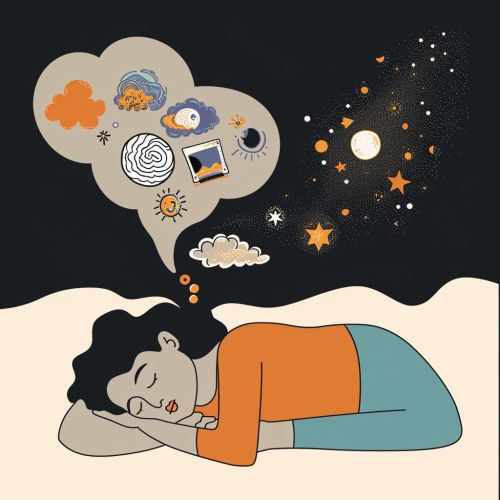Dream analysis
Introduction
Dream analysis, also known as dream interpretation, is a process where the meanings and messages within dreams are explored. This field of study has roots in various cultures and philosophies, including ancient Egyptian and Greek societies, and has been a topic of interest in both psychological and spiritual contexts.


Historical Context
Dream analysis has been practiced since ancient times. In many early civilizations, dreams were considered a form of divine communication and their interpretation was often performed by priests or wise elders. In ancient Egypt, for instance, dream interpreters were highly regarded and their interpretations were recorded in Dream Books.
The ancient Greeks also placed great importance on dreams. They believed that dreams could foretell the future and used dream interpretation in their healing practices. The Greek god of dreams, Morpheus, was said to deliver messages from the gods through dreams.
Psychological Perspectives
Sigmund Freud
Sigmund Freud, the father of psychoanalysis, was one of the first to propose a psychological theory of dream analysis. In his book, The Interpretation of Dreams, Freud suggested that dreams are a reflection of repressed desires and unconscious thoughts.
Freud believed that the content of dreams, known as the dream's manifest content, is a disguised representation of the dreamer's repressed wishes, known as the dream's latent content. He proposed that through dream analysis, these hidden desires could be brought to conscious awareness and addressed in psychotherapy.
Carl Jung
Carl Jung, a student of Freud, also made significant contributions to dream analysis. Unlike Freud, who believed dreams were a form of wish fulfillment, Jung saw dreams as a tool for the psyche to communicate with the conscious mind. He believed that dreams could provide insights into personal growth and self-realization.
Jung proposed the concept of the collective unconscious, a shared reservoir of archetypes and symbols that influence our dreams. He suggested that by analyzing these symbols, individuals could gain insight into their personal and spiritual development.
Techniques of Dream Analysis
Dream analysis involves a variety of techniques. The most common method is the symbolic approach, where each element of the dream is considered a symbol representing something else. This method is heavily influenced by the theories of Freud and Jung.
Another technique is the cognitive approach, which views dreams as a reflection of waking life. This approach suggests that dreams are a way for the brain to process and organize information from daily experiences.
The phenomenological approach, on the other hand, focuses on the dreamer's personal experience and emotions during the dream. This method emphasizes the subjective nature of dreams and the personal meaning they hold for the dreamer.
Criticisms and Controversies
Despite its long history and widespread interest, dream analysis is not without its critics. Some argue that the interpretation of dreams is highly subjective and lacks scientific rigor. Others question the validity of certain theories, such as Freud's notion of repressed desires or Jung's concept of the collective unconscious.
Moreover, the field of dream analysis has been criticized for its lack of empirical evidence. While some studies have found correlations between dream content and psychological factors, these findings are often inconsistent and difficult to replicate.
Conclusion
Dream analysis remains a fascinating and complex field of study. Despite the controversies and criticisms, it continues to be a popular topic in both psychological and spiritual contexts. While the interpretation of dreams may not be an exact science, it provides a unique window into the human mind and the mysteries of the unconscious.
